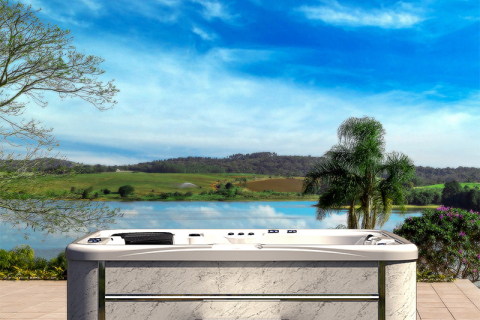
- Home
- >
News
Suggestion: Ask yourself before installing an outdoor spa hot tub 1. Is it installed for your own enjoyment or for resale price increase? 2. Does your house layout and style support an outdoor spa space? 3. Are you willing to bear the subsequent maintenance, disinfection, electricity bills and other responsibilities? 4. Is there an actual demand for this facility in your market and region?
It is not recommended to use a humidifier for outdoor spa hot tubs · In most open environments, outdoor spa hot tubs do not require additional humidifiers. · If it is set in a semi-enclosed space, located in an extremely dry area, or has special needs, auxiliary humidity control devices can be considered depending on the specific situation.
Conclusion of typical energy efficiency of outdoor spa hot tub Modern high-performance outdoor spa hot tubs usually consume between 1000 and 2500 kWh of electricity per year, and the energy efficiency depends on multiple factors such as insulation structure, heating system efficiency, pump system design and user habits.
The water capacity of the swim spa jacuzzi is much larger than that of an ordinary hot tub, generally up to 1500 to 5000 liters or even more. The larger the water volume, the more energy is required for heating, and the time will naturally be longer.
The correct response after accidentally drinking spa hot tub water 1. Rinse your mouth immediately and observe your body's reaction 2. Drink plenty of water to dilute the ingested ingredients 3. Seek medical attention as appropriate ·Large intake (such as >200ml); ·Obvious diarrhea that has not been relieved for more than 24 hours...
Spa jacuzzi tub: Which material is better? If you pay more attention to durability and easy maintenance, choose acrylic spa jacuzzi. If you like the natural wood beauty and are willing to maintain it regularly, wooden spa jacuzzi tub is a good choice.
The methods of disinfecting outdoor spa jacuzzi water are: 1. Chlorine disinfection method 2. Ozone disinfection method 3. Ultraviolet (UV) disinfection method 4. Salt water chlorination disinfection method
One of the main reasons for filters popping out is too much water pressure. The pump in the swim spa tub filters the water by pushing the water through the filter with a strong water flow. If the pump is too powerful or the water flow is set too strong, the strong water flow may create enough pressure to push the filter out of its mounting slot.
The size of the square spa hot tub This is the most intuitive factor that affects the water capacity. Generally speaking, the larger the size of a square spa hot tub, the more water it can hold. For example: · Small spa hot tub (suitable for 2-3 people): about 150-300 gallons. · Medium spa hot tub (suitable for 4-6 people): about 300-500 gallons. · Large spa hot tub (suitable for 7 people and more): up to 600-1,000 gallons or more.
Some modern spa jacuzzi tubs use optimized pumps and noise isolation technology. The operating noise of these products is generally between 50 and 60 decibels. In comparison, 60 decibels of noise is about the same as the sound of conversations in an ordinary home environment or the sound of indoor air conditioning.
Currently, many outdoor spa jacuzzis on the market are equipped with jet systems that can adjust the water flow intensity. Different brands and models of bathtubs may use different technical means to achieve the adjustment of jet intensity. Common technical principles include manual adjustment and automatic adjustment.
The definition of "luxury goods" is items that are used for conspicuous consumption and exceed basic living needs. If the outdoor spa jacuzzi tub is only used for display, it may indeed be luxury; but if it is used for health management, rehabilitation, mental adjustment and daily relaxation of family members, its nature will change to functional equipment, similar to treadmills, massage chairs, and water purifiers.












